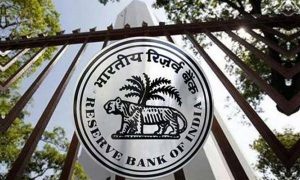Sovereign Gold Bond unit is worth the value of one gram of the precious metal in the highest degree of purity.
The Sovereign Gold Bond (SGB) is a government-backed scheme that enables investors to earn market-linked returns as well as interest at the rate of 2.5 per cent without having to own the yellow metal in physical form. The Reserve Bank of India (RBI) issues the gold bonds on behalf of the Government of India under the scheme.
Each unit of the bonds is equivalent to one gram of gold of 99.9 per cent purity in value. Simply put, each Sovereign Gold Bond unit is worth the value of one gram of the precious metal in the highest degree of purity.
Read More: SIM Card Seller To Rs 83,000 Crore Company, A Look At OYO Founder Ritesh Agarwal’s Journey
Here’s a brief history of Sovereign Gold Bonds (SGBs) and some important details to know about the scheme:
When was the SGB scheme launched?
The Sovereign Gold Bond scheme was launched on November 5, 2015, by Prime Minister Narendra Modi.
Was it the only such scheme launched?
The government introduced the Sovereign Gold Bond scheme along with two other schemes: the Gold Monetisation Scheme and the India Gold Coins.
What is the purpose of the SGB scheme, and the other two gold schemes?
The three instruments—including the gold bonds—share the common goal of monetising an estimated 20,000 tonnes of gold available in the country in physical form.
The gold available in the country should be put to productive use, PM Modi said on the day of the launch of the schemes.
Heard of the expression ‘sone pe suhaga’?
All the three schemes were described as examples of ‘sone pe suhaga’ by none other than PM Modi himself.
Read More: Why ICICI Prudential AMC Is Among The Best Mutual Fund Managers Offering High Returns
Here are some of the important things to know about the Sovereign Gold Bonds:
Who can invest in the scheme?
Individuals, Hindu Undivided Families, trusts, universities and charitable institutions can invest in the gold bond scheme, subject to applicable limits.
Can NRIs also invest in SGBs?
No. Only residential citizens are eligible to invest in SGBs. However, individual investors who change their residential status from resident to non-resident may continue to hold SGBs until redemption or maturity.
Are Sovereign Gold Bonds available throughout the year?
No. Sovereign Gold Bonds are open for subscription in tranches. The Government of India decides to issue SGBs in consultation with the RBI.
Is there any investment limit applicable to Sovereign Gold Bonds?
While individuals and HUFs can purchase gold bonds equivalent to four kilograms of gold (4,000 units) each in a financial year, for trusts and similar institutions, a limit of 20 kilograms a financial year is applicable.
What happens in case of joint ownership of gold bonds?
In such cases, the limit applies to the first applicant.
Are the gold bonds also traded in the secondary market?
Yes.
Why should one go for Sovereign Gold Bonds as an investment avenue rather than physical gold?
The RBI has answered this question quite thoroughly.
The SGB offers a superior alternative to holding gold in physical form, according to the central bank’s website, rbi.org.in.
Read More: 87% Of Rs 2,000 Notes Deposited, Rs 12,000 Cr Of Currency Yet To Return: RBI
Here are a few important points highlighted by the RBI:
- The investor receives the ongoing market price at the time of redemption/premature redemption, hence the quantity of gold—for which the investor pays—is protected
- The risks and costs of storage are eliminated
- The investor is assured of the market value of gold at the time of maturity and periodical interest
- SGB is free from issues like making charges and purity in the case of gold in jewellery form
- The bonds are held in the books of the RBI or in demat form eliminating risk of loss of scrip etc
Are there any risks involved in the SGB scheme?
“There may be a risk of capital loss if the market price of gold declines. However, the investor does not lose in terms of the units of gold which he has paid for,” according to the RBI portal.
Lock-in period
The gold bonds mature in eight years. However, early redemption is possible after the completion of five years under certain conditions.
What is the rate of interest applicable to SGB investments and how frequently is it paid?
The gold bonds bear interest at a fixed rate of 2.5 per cent per annum on the amount of initial investment. The interest is credited to the bank account of the investor semi-annually.
Online discount
Investors applying for the gold bonds online are eligible to avail a discount of Rs 50 per unit on the condition that they make the payment through a digital mode.
Are there any other advantages of investing in Sovereign Gold Bonds?
“Upon maturity, whatever capital gains arise due to holding Sovereign Gold Bonds in your portfolio are tax-free. In the case of holding physical gold, in the form of a gold bar or a biscuit, you have to bear certain extra costs for the locker. And for those who are only buying gold for the purpose of investment, SGB is a good tool,” Manoj Kumar Jain, Head-Commodity and Currency Research at Prithvi Finmart, told Zeebiz.com.





































